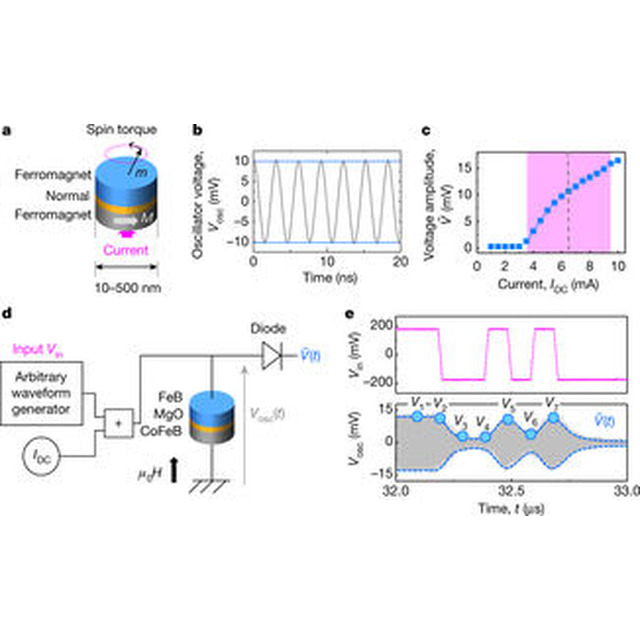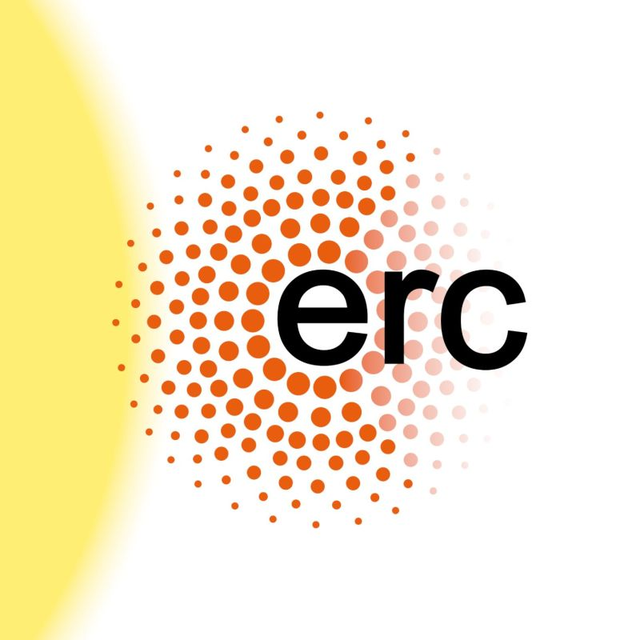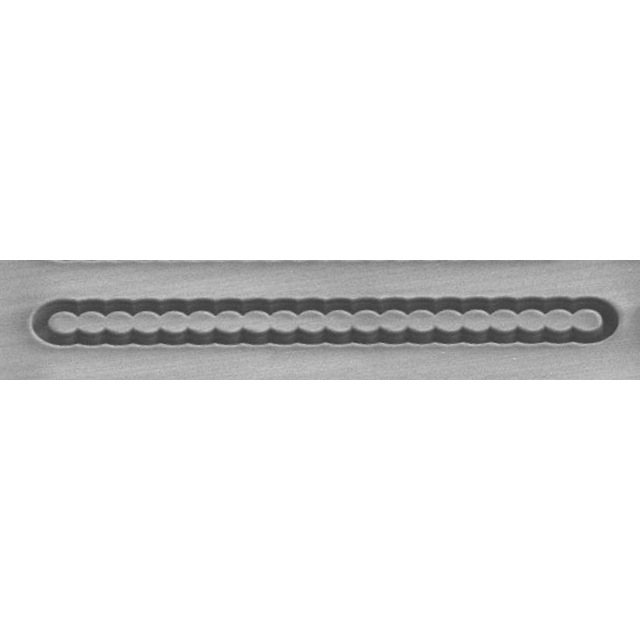Neurons in the brain behave as nonlinear oscillators, which develop rhythmic activity and interact to process information. Taking inspiration from this behaviour to realize high-density, low-power neuromorphic computing will require very large numbers of nanoscale nonlinear oscillators. A simple estimation indicates that to fit 108 oscillators organized in a two-dimensional array inside a chip the size of a thumb, the lateral dimension of each oscillator must be smaller than one micrometre. However, nanoscale devices tend to be noisy and to lack the stability that is required to process data in a reliable way. For this reason, despite multiple theoretical proposals and several candidates, including memristive and superconducting oscillators, a proof of concept of neuromorphic computing using nanoscale oscillators has yet to be demonstrated.
Here we show experimentally that a nanoscale spintronic oscillator (a magnetic tunnel junction) can be used to achieve spoken-digit recognition with an accuracy similar to that of state-of-the-art neural networks. We also determine the regime of magnetization dynamics that leads to the greatest performance.
These results, combined with the ability of the spintronic oscillators to interact with each other, and their long lifetime and low energy consumption, open up a path to fast, parallel, on-chip computation based on networks of oscillators.
Reference:
Neuromorphic computing with nanoscale spintronic oscillators,
Jacob Torrejon, Mathieu Riou, Flavio Abreu Araujo, Sumito Tsunegi, Guru Khalsa, Damien Querlioz, Paolo Bortolotti, Vincent Cros, Kay Yakushiji, Akio Fukushima, Hitoshi Kubota, Shinji Yuasa, Mark D. Stiles & Julie Grollier
Nature - volume 547, pages 428–431 (27 July 2017) / DOI : https://doi.org/10.1038/nature23011









